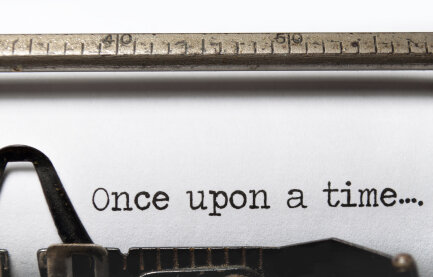 Daddy Dom/little girl in the Public Sphere, by Daddy Vinnie
Daddy Dom/little girl in the Public Sphere, by Daddy Vinnie
You’ve found the Little of your dreams – adorable, fun, bratty, silly, vulnerable, sweet, and most of all, she worships you as much as you worship her. You’re on top of the world, looking down on creation…and cheesy pop songs are overflowing from your heart.
Now what? It’s time to head into the outer world. Unplug that computer, get out from behind your Skype screen, leave the bedroom, and see the fresh light of day, the bright lights of the city at night.
DD/lg relationships come in all shapes and sizes. More properly, Caregiver/little relationships can be any conceivable combination of sexual orientation, power dynamics, and ages. In my own DD/lg relationship, we have an almost 23 year age gap relationship, where my Little calls me “Daddy.” Though I’m not biologically her Daddy, I’m old enough to be so, and those who don’t know us wouldn’t know.
When we’re out in public, our dynamic and feelings for each other don’t stop. She calls me “Daddy” by habit. Sometimes we get looks from others. Sometimes just to make a point, we’ll kiss passionately after she calls me “Daddy.” We’re comfortable with who we are, and we don’t let anyone inhibit us from expressing our love and affection.
We do know, however, what’s appropriate and not for public consumption. We don’t actually announce our forays into department store dressing rooms or the mile-high club on airplanes.
The bottom line is that DD/lg dynamics are consensual adult relationships, and what’s appropriate for other relationships is equally so for those involved in DD/lg.
Together, in public, my Lolita and I walk hand in hand, arm and arm. We kiss, we hug. At the park, she’ll sit on my lap. At restaurants, I’ll order for her, despite waitresses insisting on asking my Lolita directly for her order. She’ll jump up and down and demand a Happy Meal, which I oblige her with occasionally. We shop together, we go to community kink events together, we eat at restaurants, go to the movies. We’ll even indulge in intense public PDA occasionally, just as other lovers do. No matter. We’re adults! So don’t hide your DD/lg relationship. Get out there and declare yourself.
I’m Daddy Vinnie, a Daddy Dom, and this is my Lolita, my Little.
Here’s a list of our favorite places to go that indulge our DD/lg relationship:
1. The Sanrio store – everything Hello Kitty. Is there anything more awesome for a Little? Or for a Daddy to watch his Little?
2. The Cupcake restaurant – we have a popular cupcake restaurant here in San Diego called Babycakes that makes specialty cupcakes. Love the vanilla sprinkle, pistachio, and red velvet cupcakes. Yummy!
3. Dave and Buster’s – who doesn’t like a day full of arcade games and the beverage or meal of your choice?!
4. A Drive to the beach and the mountains – it’s not so much the destination, it’s the journey, uninterrupted time for Daddy and Little.
5. The Movies – when that latest Disney, Pixar, or independent animated movie comes out, who is first in line? That’s right: Daddy and his Little.
We still have a ways to go before the vast majority of people understand the DD/lg dynamic. Until then, remember that expressing love and affection in public is never wrong. Having a loving attitude toward your partner–and ignoring ignorant and judgmental stares and comments–goes a long way toward making this world a better place.
I know there’s nowhere that I’d rather be, than seeing the great big wonderful world as a Daddy through the eyes of my very own Little.
Lolita’s List of 5 Things to do with Daddy out of the House, by Lolita Hayes
So you’re in a DD/lg relationship with an amazing partner. You love being Little, but there is one thing holding you back: being Little in public. What is okay to do? What isn’t okay? What are some fun, Little-friendly things you can do?
These are all great questions. Whenever DD/lg couples are out in public, how do they decide what is appropriate intimate behavior and what isn’t? There is a time and place for everything, and, of course, you should limit yourself based on simple guidelines, like following local laws and being aware of the environment you are in. However, you should never feel like you cannot be Little with your Daddy out in the world. For example, you can always call Daddy “Daddy” in public. Many might feel a bit reserved about crossing that line, and you should never do something you’re not comfortable doing. However, do not let the fact you’re in public stop you. There is nothing wrong with calling your partner by their “pet name.” In fact, we have all heard it before by other couples: “Babe,” “Darling,” “Pumpkin.” You’re a happy couple in love. Have fun and be true to who you are!
Now, how about some activities you can do out of the home that can help you and your Daddy connect within your DD/lg dynamic!
I have come up with a small list to get you started:
Lolita’s List of 5 Things to do with Daddy out of the House.
1. Go to a Park (one with a play-set) – It doesn’t matter if there are people already at the park. All that should matter is you and your Daddy are there and having fun. Let him push you on the swings, go down slides, climb around and be Little! Even if you’re not a Little who enjoys this sort of thing, it’s the type of activity that is hopelessly romantic! It’s okay to let your Little out and have fun at the park.
2. Go to the Drive-in Movie – I don’t know about you, but there is something “Little” about cozying up in the back of the truck piled with pillows and blankets and watching “Brave” with Daddy. Throw in candy, kisses, popcorn, and cuddles here and there … bliss.
3. Window Shopping in a Sleepy Town in the Mountains – All right, so this one’s a bit specific, but Daddy and I took a trip to the mountains recently. It was the perfect quick get-away. It was a long drive and it rained, but we got coffee, looked in shops, had lunch, walked in the rain, and hiked to a small brook. It was one of the best days with Daddy yet, like taking a vacation just for the day.
4. Trip to the Candy Store – Nothing makes me feel more Little than a quick trip to a candy store. We look around, we giggle at all the cool things you can find, remember candies you forgot you used to love when you were kids, and duh … TRY some!
5. Build-A-Bear/Chuck-E-Cheese/ Amusement Parks – And other kid friendly (and adult friendly) places you can go be Little! Don’t feel limited to going to these places even though you’re an adult. You’re just as welcome to be there as anyone else, and it’s a perfect way to play and be Little!
These are just some quick ideas to get you started. Follow the laws and rules of any environment you’re in, keep the PDA appropriate, call him “Daddy” if you want to, and be yourself. Get out, be Little, and have fun!
 There are entire industries built around creating the right “style.” Interior designers craft inside spaces, exteriors can be landscaped, xeriscaped, gardened and beautified. You can go to a trichologist, a barber, or a hairdresser to have the top of your head done up a plethora of ways. Personal shoppers, stylists and coaches can help you buy the accessories to portray what you want, and many of us will spend hours picking the right pieces to go in our wardrobes. Is your look at work different than your weekend look? What do you wear to a formal event? Do you have a “look that you’re going for?” How do you go about getting it?
There are entire industries built around creating the right “style.” Interior designers craft inside spaces, exteriors can be landscaped, xeriscaped, gardened and beautified. You can go to a trichologist, a barber, or a hairdresser to have the top of your head done up a plethora of ways. Personal shoppers, stylists and coaches can help you buy the accessories to portray what you want, and many of us will spend hours picking the right pieces to go in our wardrobes. Is your look at work different than your weekend look? What do you wear to a formal event? Do you have a “look that you’re going for?” How do you go about getting it?








